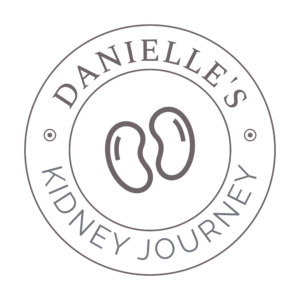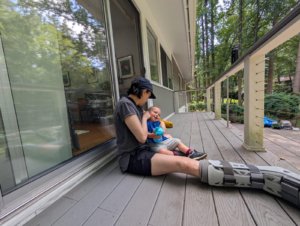Learning to Sit With Pain
Good morning everyone,
I hope you had a good Labor Day weekend. I’m still enjoying a period of relative stability—getting together with friends, going out for meals, and taking Barney on playdates.
On the health front, I had my transplant meeting with Johns Hopkins last week, and I was genuinely impressed. The nephrologist went straight to business explaining how the team would manage my next transplant given all the complications my body has been through. I walked away feeling confident, with an inner voice saying, “You’re at the right place.” As a result, I’m slowly migrating my care over to Hopkins, which feels like a positive next step.
Being focused on transitioning my care has also made me reflect on another constant in my life lately: pain. Over the last 19 months, I’ve experienced a lot of pain—and I know there’s more to come. I’ve generally been pain-avoidant before all of this. The worst I experienced was a migraine—and they are terrible. The moment one would hit, I’d pop a pill, lie down, and distract myself with a podcast or TV.
Although I’ve studied pain from psychological and spiritual perspectives, I haven’t really put that knowledge into practice until recently. Spiritually, pain can be seen as a path to transformation—where leaning into discomfort opens the door to greater awareness, love, and connection with God. Psychology offers a complementary perspective: accepting pain, rather than resisting it, eases suffering and fosters presence.
These ideas become more appealing when I consider my own body’s experience. Take my ripped calf muscle, for example. As of three weeks ago, at 3 AM every morning, I’d wake up with my ankle and calf on fire. I’d take Tylenol and gabapentin, and while waiting for the pain to subside, I’d scroll through Instagram or watch TV. Most of my energy went into resisting it, adding another layer of suffering—frustration, restlessness, and a mind that would not stop thinking about how much it hurts.
Recently, a friend who had a heart transplant suggested I get to know my body better—to notice cues and become more present. She explained that this practice has helped her recognize when something is wrong and made her one of her own biggest advocates for her care. Her advice made me reflect on my experience: for years, my mind hovered above my body like a ghost—what psychology calls dissociation, a disconnect from physical sensations and the present moment.
Lately, that disconnect has stopped serving me; I no longer want to escape into scrolling or other distractions as often. Maybe it’s the awareness of impermanence, made impossible to ignore by my health struggles, that’s helping me live more fully in other areas of my life. My motivation is simple: I want to connect with my body more. Even when pain shows up, I want to experience it rather than float above it.
To act on that intention, I’ve begun a nightly practice of sitting with my calf pain—asking where it lives, what it feels like, and what colors, shapes, or sizes it might have. Often, the pain radiates up my arm and neck, producing tingles that once made me want to scramble out of bed. But instead of fighting it, I let it exist, and slowly the urge to flee subsides. By noticing it without labeling it ‘bad,’ I can relax into it. My hope is that by relating differently to the smaller pains, it will make the bigger ones more tolerable in the future.
What I’m noticing is that pain isn’t as overwhelming as my mind once made it out to be, and I’m beginning to feel a stronger connection to myself. My mind doesn’t hover above my body as much. I still rely on medications to manage pain, but the waiting before they kick in feels more tolerable.
I’m also noticing more awareness in moments when I’m not in pain—sensing my back and sit bones while writing at my desk or noticing my flexibility (or stiffness) during floor exercises. And I’m enjoying these experiences more fully.
To bring this email full circle: from a spiritual perspective, sitting with my pain is helping me cultivate greater awareness and self-connection—✅. From a psychological perspective, I’m engaging with my pain more fully instead of avoiding it, and I feel more present in my body—✅. Go me!
With that, I wish you a Wednesday full of noticing, trying something new, and experiencing whatever needs to be felt.
Love,
Danielle
PS. I don’t have many pictures of me in my boot, but here’s a happy one with my son Barney being adorable.
Interested in becoming a living kidney donor? Learn more through DOVE, a nonprofit supporting veterans in need.



